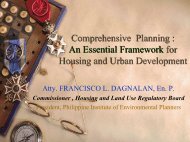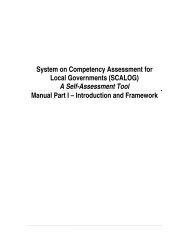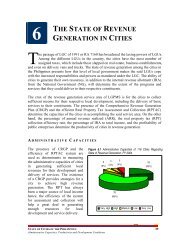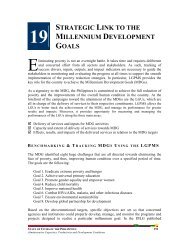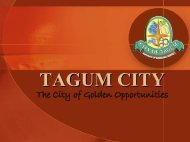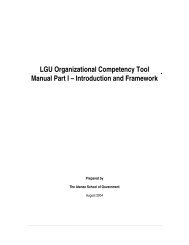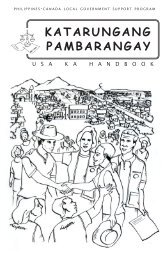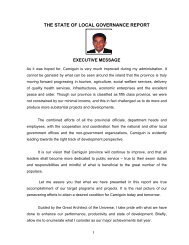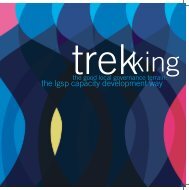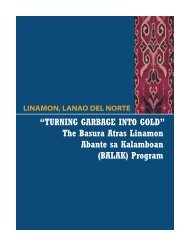PED guidebook main sxn rev6. FINAL.pdf - LGRC DILG 10
PED guidebook main sxn rev6. FINAL.pdf - LGRC DILG 10
PED guidebook main sxn rev6. FINAL.pdf - LGRC DILG 10
Create successful ePaper yourself
Turn your PDF publications into a flip-book with our unique Google optimized e-Paper software.
Strengthening Provincial/LocalPlanning and Expenditure ManagementProject Evaluationand Development4.3 The case of public goods 154.3.1 There are cases when it is difficult to determine the true willingness-to-payso that whatever information we can get will clearly underestimate the truevalue of the benefit to society. We have seen this to be the case with publicgoods. There is always an incentive to free-ride. We can do either of twothings (or both):• Find a proxy for willingness-to-pay• Add to the original variable a fixed amount that will incorporate the truevalue of the benefit to society.4.3.2 The following table provides some examples.Good Willingness-to-pay Benefit to society Adjustmentirrigation service irrigation service fee food security value of rice productionreduced povertyincidence amongfarmersincreased income offarmerssafe and easy accessto water supplywater consumption feeimproved productivitygood health to (less absences frombeneficiaries work and school)environmental option value for tourismsanitation potentialreduced workload option value for time offor women womenelelctricityelectricity consumptionfeeimproved accessto informationoption value for theincreased number ofhours that can be usedfor productive purposes4.3.3 For completeness, we summarize the methodologies as surveyed by deCastillo (1998) involving several project evaluation studies.15 Although this part falls neatly into 4.2, it merits special attention particularly since most public sector projects willfall into this category.49RGEdillon January 2006



